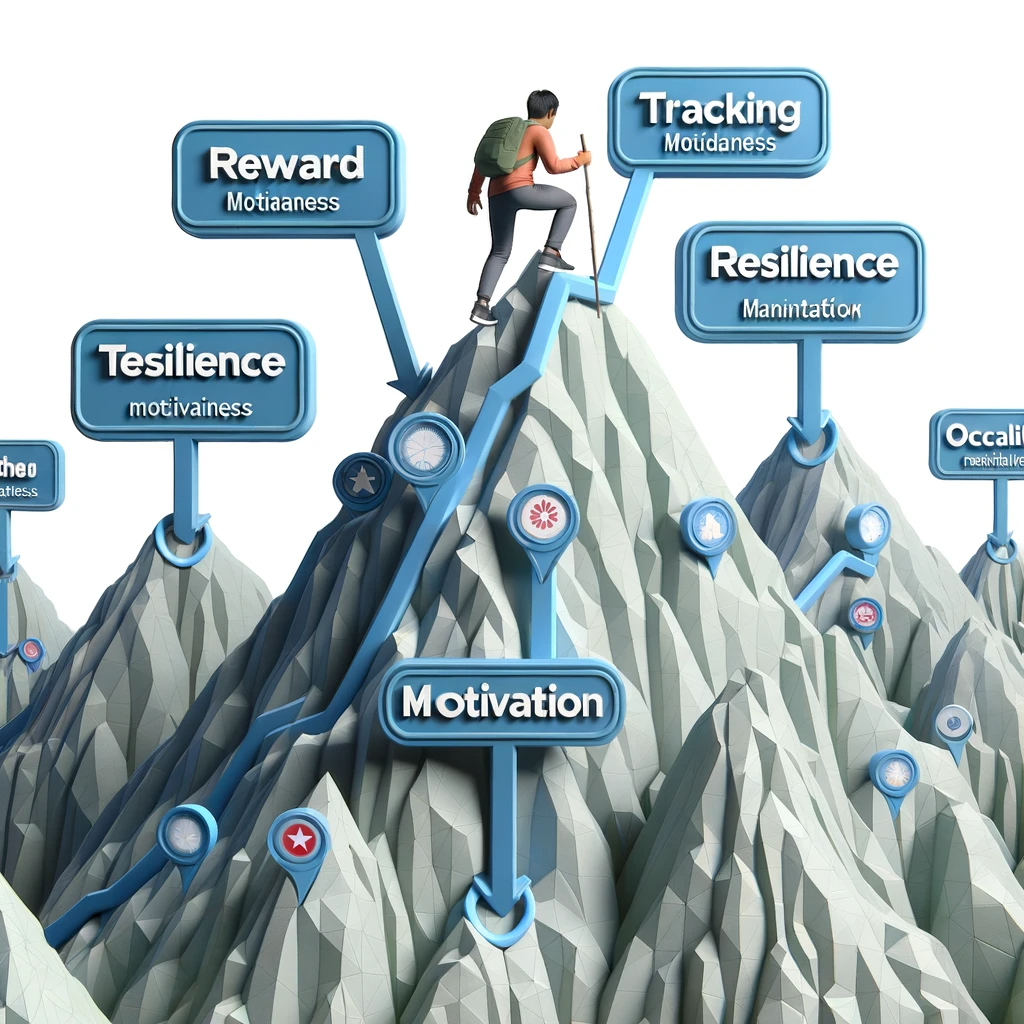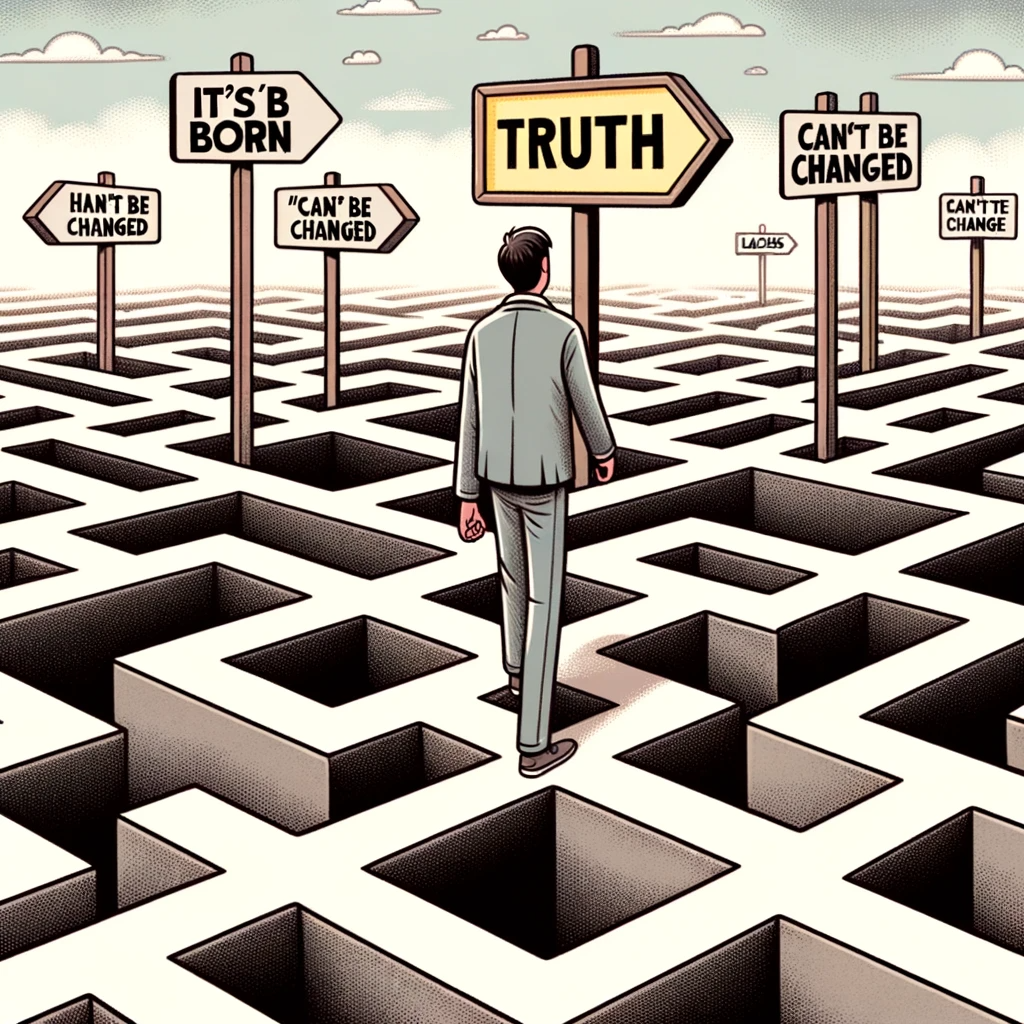A First Step Towards a More Motivated You
We’ve all been there, haven’t we? That sinking feeling of being stuck in a rut, where our inner drive has seemingly packed its bags and left without a trace. Welcome to a guide that’s all about understanding and conquering laziness and unmotivation. A guide that’s not just a read, but a journey – a step towards unveiling a more motivated, energetic, and proactive version of yourself.
Laziness and lack of motivation are not merely words; they are emotions, experiences that each one of us has grappled with at some point in our lives. It’s that invisible barrier that holds us back, preventing us from taking steps towards our goals, dreams, and aspirations. But why is it crucial to address and overcome this invisible enemy? Because, beneath the layers of procrastination and inertia, lies a potential that is waiting to be unleashed, dreams that are waiting to be realized, and a life that is waiting to be lived to its fullest.
The importance of overcoming laziness extends beyond just ticking off tasks on a to-do list. It’s about breaking free from the chains that bind us to mediocrity and stepping into a world where every day is a new possibility, a new adventure. It’s about rediscovering oneself, rekindling lost passions, and reclaiming the life that somehow got buried under the weight of inaction and passivity.
In this comprehensive guide, “How to Stop Being Lazy and Unmotivated,” we will embark on a journey together, exploring the depths of what causes laziness, understanding its psychological underpinnings, and most importantly, unveiling strategies that are not just theoretical but practically applicable in real life. From psychological insights to actionable strategies, from understanding the science of motivation to debunking myths about laziness, this guide is crafted to be your companion in this journey towards a more motivated and proactive life.
But this is not just a guide; it’s a conversation, a two-way street. As you navigate through the various sections, you’ll find stories that resonate, strategies that can be applied, and insights that are grounded in real-life scenarios and not just theoretical jargon. This guide is crafted, keeping YOU in mind, ensuring that every word, every strategy, and every insight is relatable, understandable, and most importantly, implementable.
So, as you turn this virtual page, remember: every word, every sentence, and every section is a step towards breaking free from the shackles of laziness and stepping into a world of endless possibilities. Your journey towards a more motivated, energetic, and vibrant life starts here. Let’s dive in, shall we?
Understanding Laziness and Unmotivation: A Deep Dive into the Inertia of Inaction

Laziness and unmotivation, two words that we’ve all encountered, and perhaps, even wrestled with at various points in our lives. But what do they truly signify? And how do they weave themselves into the very fabric of our daily existence, subtly sabotaging our aspirations, dreams, and endeavors? In this section, we shall delve into the realms of understanding laziness and unmotivation, unraveling their definitions, types, contributing factors, and the profound impact they cast upon our lives and wellbeing.
Defining Laziness and Unmotivation
Laziness, often perceived as the absence of action or a reluctance to exert effort, is not merely a physical state but extends its tendrils into our mental and emotional realms. Unmotivation, on the other hand, is a lack of internal drive or enthusiasm to pursue activities, goals, or tasks. Together, they form a formidable barrier, hindering our path towards productivity, achievement, and self-fulfillment.
Types of Laziness and Unmotivation
- Physical Laziness: Manifests as a reluctance to engage in physical activities or exertion.
- Mental Laziness: A resistance towards cognitive efforts, problem-solving, or creative thinking.
- Emotional Laziness: Avoidance of confronting, processing, or expressing emotions.
- Motivational Laziness: A pervasive lack of enthusiasm or drive to pursue goals or tasks.
Psychological and Physical Factors
The roots of laziness and unmotivation often burrow deep into psychological and physical terrains. Psychological aspects encompass aspects like depression, anxiety, and stress, which can significantly dampen one’s motivational levels. Physical factors might include chronic fatigue, poor nutrition, or lack of sleep, which directly impact our energy levels and, consequently, our willingness to engage in activities.
Impact on Life and Wellbeing
The tentacles of laziness and unmotivation do not merely restrict our actions but permeate into various facets of our life, affecting our relationships, career, personal growth, and mental health. The inability to muster the motivation to pursue goals or engage in activities can lead to a stagnation that casts a shadow upon our overall wellbeing and quality of life.
In the forthcoming sections of “How to Stop Being Lazy and Unmotivated,” we shall embark on a journey, exploring strategies, sharing stories, and unveiling secrets that have the potential to transform our relationship with laziness and unmotivation. From understanding the science of motivation to practical, actionable strategies that can be seamlessly woven into our daily lives, this guide aspires to be your companion in this journey towards a more motivated, proactive, and fulfilled life.
The Psychology Behind Motivation: Unlocking the Secrets to Our Drives and Desires

Embarking on a journey through the intricate pathways of our minds, let’s delve into the fascinating world of motivation. What propels us forward, igniting that spark within, urging us to act, to move, and to forge ahead? In this segment of “How to Stop Being Lazy and Unmotivated,” we shall unravel the mysteries behind motivation, exploring its definitions, types, the pivotal role of dopamine, and the psychological theories that seek to explain the ebb and flow of our motivational tides.
Defining Motivation: The Invisible Force Within
Motivation, in its essence, is the invisible force that propels us towards action, steering our desires, actions, and behaviors towards specific goals. It’s the internal or external stimulus that activates our drive, urging us to move, act, and achieve. The importance of motivation cannot be overstated, for it is the fuel that powers our journey towards achieving our goals, navigating through challenges, and sculpting our successes.
Intrinsic vs. Extrinsic Motivation: The Dual Faces of Drive
- Intrinsic Motivation: This emanates from within, driven by internal rewards such as satisfaction, joy, or personal fulfillment. It’s the passion that ignites when we engage in something that sparks our interest or aligns with our passions.
- Extrinsic Motivation: Propelled by external rewards or avoidances of undesirable outcomes, extrinsic motivation is governed by factors outside of us, such as accolades, recognition, or avoiding punishment.
Dopamine: The Neurotransmitter of Desire
Dopamine, often dubbed the ‘feel-good’ neurotransmitter, plays a pivotal role in our motivational landscapes. It’s not merely about pleasure but is intricately linked to our anticipation of rewards, driving us to seek out and engage in activities that promise a payoff, thereby playing a crucial role in both initiating and maintaining a chain of actions towards goal attainment.
Psychological Theories: Decoding Motivation and Laziness
- Maslow’s Hierarchy of Needs: Proposing that our actions are motivated to fulfill unmet needs, Maslow’s pyramid ranges from basic survival needs to the pinnacle of self-actualization.
- Expectancy Theory: Suggests that our actions are dictated by the expected outcomes, weighing the value of the reward against the efforts required.
- Self-Determination Theory: Focusing on the interplay between intrinsic and extrinsic motivation, it explores how external factors can internalize and become intrinsic motivators.
- Procrastination-Action Line: A theory that explores the threshold where the urgency to act overpowers the inertia of procrastination, providing insights into laziness and delayed actions.
In the subsequent sections of this guide, we shall traverse through practical strategies, real-life stories, and actionable insights, all meticulously crafted to empower you on your journey from inertia to action, from laziness to a life brimming with motivation and purpose.
Identifying Personal Triggers for Laziness and Unmotivation: A Journey Towards Self-Discovery

Embarking on a journey towards a life free from the shackles of laziness and unmotivation begins with a crucial step: understanding oneself. In this chapter of “How to Stop Being Lazy and Unmotivated,” we delve into the realm of self-awareness, exploring the significance of recognizing patterns of lazy behavior, the power of journaling, and learning through real-life case studies to identify the triggers that hold us back.
Recognizing Patterns of Lazy Behavior: The First Step Towards Change
Recognizing patterns of lazy behavior is akin to shining a light on the shadows that silently steer our actions, or in this case, inactions. It’s about observing those moments where inertia takes hold, where tasks are postponed, and activities are avoided. This recognition isn’t about self-judgment but understanding, for in the patterns of our laziness, we find clues to the triggers that fuel them.
Journaling and Self-Awareness: The Mirror to Our Inner World
Journaling, a simple yet profoundly impactful practice, serves as a mirror reflecting our inner world, our patterns, triggers, and behaviors. It’s a safe space where thoughts are laid bare, where patterns emerge, and where the seeds of self-awareness are sown. Through the consistent practice of journaling, we not only document our days but decode the subtle undercurrents of our actions, paving the way towards profound insights and self-discovery.
Case Studies: Learning from the Journeys of Others
- Case Study 1: The Procrastinator Turned Productive: Dive into the story of Alex, who transformed from a chronic procrastinator to a beacon of productivity, not by battling laziness, but understanding its roots, recognizing patterns, and gently steering towards change.
- Case Study 2: From Unmotivated to Unstoppable: Explore the journey of Priya, whose lack of motivation cast a shadow upon her dreams, until the day she decided to delve deep, identify her triggers, and transform them into stepping stones towards her goals.
Understanding our triggers, those internal and external factors that fuel our lazy and unmotivated behaviors, is a pivotal step towards transformation. It’s about gently peeling away the layers, exploring the whys of our inaction, and in that understanding, finding the keys to unlock a life of action, motivation, and fulfillment.
In the chapters to come, we shall explore strategies, delve into psychological insights, and walk alongside individuals who have traversed this path, extracting learnings, strategies, and insights that you can apply in your journey towards a life free from laziness and brimming with motivation and purpose.
Strategies to Overcome Laziness and Boost Motivation: Your Blueprint to a Proactive Life

Embarking on the journey from inertia to action, from dreams to reality, requires more than just willpower; it demands strategies, a roadmap that navigates through the terrains of laziness and unmotivation, steering us towards a life of purpose, action, and fulfillment. In this chapter of “How to Stop Being Lazy and Unmotivated,” we delve into strategies that are not merely theoretical but are grounded in practicality, ensuring that every step you take is a step towards a more motivated, energetic, and vibrant life.
Setting SMART Goals: Crafting a Vision that Fuels Action
Setting goals is pivotal, but setting SMART goals – Specific, Measurable, Achievable, Relevant, and Time-bound – is transformative. It’s about crafting a vision that is clear, tangible, and most importantly, achievable, ensuring that every step taken is a step towards realizing your dreams and aspirations.
Developing a Routine and Habits: The Building Blocks of a Motivated Life
Routines and habits, often perceived as mundane, are the unsung heroes in our journey towards overcoming laziness. It’s about creating a structure, a framework that gently guides us towards consistent action, ensuring that motivation is not a sporadic visitor but a constant companion in our lives.
The Role of Physical Activity in Boosting Motivation: Energizing Body and Mind
Physical activity, a catalyst that not only energizes the body but also the mind, plays a crucial role in boosting motivation. It’s not merely about fitness but about kindling the energy within, ensuring that our physical vitality translates into mental and emotional vigor.
Utilizing Productivity Techniques: Navigating Towards Efficiency and Effectiveness
- The Pomodoro Technique: A time-management method that utilizes intervals of focused work followed by short breaks, ensuring that productivity and rest walk hand in hand.
- The Eisenhower Matrix: A strategy that helps prioritize tasks based on their urgency and importance, ensuring that our efforts are directed towards activities that truly matter.
In the subsequent chapters, we shall continue to explore, understand, and navigate through the multifaceted world of laziness and motivation. From understanding the science behind motivation to exploring real-life stories of transformation, this guide is crafted to be your companion in this journey towards a life that is not bound by the chains of laziness but is propelled towards action, purpose, and fulfillment.
The Role of Mindset in Overcoming Laziness: Steering the Mind Towards Action and Positivity

In the realm of overcoming laziness and fostering motivation, the mindset emerges as a pivotal player, steering our thoughts, actions, and ultimately, our realities. In this chapter of “How to Stop Being Lazy and Unmotivated,” we delve into the profound impact of mindset, exploring the dichotomy of fixed and growth mindsets, the journey towards developing a positive and proactive mindset, and techniques that promise not just a shift in mindset but a transformation in our lives.
Fixed vs. Growth Mindset: The Foundations of Our Perceptions and Actions
- Fixed Mindset: Rooted in the belief that our abilities and intelligence are static, a fixed mindset perceives challenges as threats, viewing failures not as opportunities for growth but as a negative reflection of one’s abilities.
- Growth Mindset: Grounded in the belief that our abilities can be developed, a growth mindset perceives challenges as opportunities, viewing failures as stepping stones towards learning and development.
Developing a Positive and Proactive Mindset: The Catalyst for Change
Developing a positive and proactive mindset is not about denying the existence of challenges but about perceiving them through a lens of opportunity and learning. It’s about fostering a mindset that perceives possibilities, that views challenges not as insurmountable obstacles but as opportunities for growth, learning, and development.
Techniques to Shift Mindset: Tools for Transformation
- Affirmations: Positive statements that aim to overcome negative thoughts, affirmations serve as reminders of our abilities, our worth, and our potential, gently steering our minds towards positivity and possibility.
- Visualization: A technique that involves visualizing our goals, dreams, and successes, visualization serves as a tool that not only clarifies our desires but also propels our subconscious mind towards action and achievement.
- Mindfulness and Meditation: Practices that ground us in the present, mindfulness and meditation serve as tools that not only foster a sense of calm and peace but also enhance our awareness, ensuring that our actions are aligned with our goals and values.
In the subsequent chapters, we shall continue to explore, navigate, and understand the multifaceted world of laziness and motivation. From practical strategies to psychological insights, this guide is crafted to be your companion in your journey towards a life that is not merely lived but is consciously crafted, a life that is not bound by the chains of laziness but is propelled towards action, purpose, and fulfillment.
How to Maintain Consistent Motivation: A Beacon of Perseverance Amidst the Ebb and Flow of Life

In the journey of “How to Stop Being Lazy and Unmotivated,” maintaining consistent motivation emerges as a beacon that illuminates our path, even amidst the inevitable ebb and flow of life. It’s not merely about igniting the spark of motivation but ensuring that it continues to burn brightly, guiding us towards our goals, dreams, and aspirations, even amidst challenges, setbacks, and failures.
The Quintessence of Consistency in Motivation: A Steady Flame Amidst the Winds of Challenges
Consistency in motivation is akin to a steady flame that continues to burn, even amidst the gusty winds of challenges and setbacks. It’s about ensuring that the flame of motivation, once ignited, continues to illuminate our path, providing light and direction, even when the journey gets arduous and the path, uncertain.
Strategies for Maintaining Motivation: Nurturing and Sustaining the Flame Within
- Rewards: Implementing a reward system that not only acknowledges but also celebrates milestones, ensuring that every step taken is recognized, appreciated, and celebrated.
- Tracking Progress: Utilizing tools and techniques to track progress, ensuring that every step, no matter how small, is documented, providing a visual representation of the journey traversed and the path that lies ahead.
- Community and Support: Engaging in communities and seeking support, ensuring that the journey is not traversed alone but is shared, celebrated, and sometimes, even commiserated.
Dealing with Setbacks and Failures: Viewing Challenges Through a Lens of Growth and Opportunity
Setbacks and failures, often perceived as deterrents, are, in reality, stepping stones, opportunities that provide insights, learnings, and sometimes, redirection towards paths that are more aligned with our goals and aspirations. It’s about perceiving challenges not as obstacles but as opportunities for growth, learning, and development.
In the chapters to come, we shall continue to explore, navigate, and understand the multifaceted world of laziness and motivation. From understanding the science behind motivation to exploring real-life stories of transformation, this guide is crafted to be your companion in your journey towards a life that is not merely lived but is consciously crafted, a life that is not bound by the chains of laziness but is propelled towards action, purpose, and fulfillment.
Real-Life Success Stories: Triumph Over Laziness and Unleashing Potential

Embarking on a journey to understand “How to Stop Being Lazy and Unmotivated,” we find inspiration and wisdom in the tales of those who have walked this path before us. Real-life stories of individuals who, amidst the shackles of laziness and unmotivation, found the strength, courage, and perseverance to break free, to rise, and to triumph. These stories, rich with experiences, struggles, and victories, serve not merely as tales of inspiration but as beacons of wisdom, guiding us in our own journeys towards motivation, action, and achievement.
Story 1: The Unlikely Marathoner
Meet John, a man whose life was once defined by the confines of his comfort zone, a zone that was characterized by inactivity, procrastination, and unfulfilled dreams. The turning point came when a health scare jolted him into reality, propelling him towards change. His journey from being a non-runner to completing a marathon is not merely a story of physical transformation but is a testament to the power of a shifted mindset, disciplined routine, and unwavering perseverance.
Lessons Learned:
- Shift in Mindset: The first step towards change is a shift in mindset, a belief that change is possible.
- Discipline and Routine: Consistency, discipline, and a structured routine serve as the pillars that support the journey towards any goal.
Story 2: The Aspiring Writer
Next, we have Lisa, a woman whose dreams of becoming a writer were buried under the weight of self-doubt and fear of failure. Her story unfolds as she decides to challenge the voice of doubt and fear, embarking on a journey that not only leads her to become a published author but also transforms her fear into a source of inspiration and her self-doubt into a wellspring of creativity.
Lessons Learned:
- Embrace Fear: Fear, when embraced, has the potential to transform into a powerful source of motivation and inspiration.
- Challenge Self-Doubt: Challenging and overcoming self-doubt unleashes potential and opens doors to possibilities.
How to Apply These Lessons in Your Life
- Embrace and Implement Change: Identify areas in your life that are calling for change and take intentional steps towards implementing this change.
- Develop and Stick to a Routine: Establish a routine that supports your goals and ensure that you stick to it, even amidst challenges and setbacks.
- Seek and Find Inspiration: Find inspiration in the stories of others and use this inspiration as a fuel that propels you towards your goals.
In the chapters that follow, we shall delve deeper into the world of motivation, exploring strategies, techniques, and insights that promise not merely a journey towards our goals but a journey that is enriched with learning, growth, and transformation.
Common Mistakes and Misconceptions About Laziness: Unveiling Truths and Navigating Through Misunderstandings

In our journey to comprehend “How to Stop Being Lazy and Unmotivated,” it’s pivotal to address the myriad of myths and misconceptions that often cloud our understanding and approach towards laziness and unmotivation. These misconceptions not only mislead us but also potentially hinder our progress towards overcoming laziness and fostering motivation. In this section, we shall debunk some prevalent myths, highlight common mistakes, and guide you on how to sidestep or rectify these pitfalls.
Debunking Myths About Laziness and Unmotivation
- Myth: Laziness is a Choice
- Truth: Laziness can often be a manifestation of underlying issues such as burnout, mental health struggles, or physical exhaustion.
- Myth: Procrastination is Synonymous with Laziness
- Truth: Procrastination might stem from a fear of failure or perfectionism, not necessarily laziness.
- Myth: Laziness Indicates Lack of Willpower
- Truth: Laziness might be unrelated to willpower and could be influenced by various psychological or physical factors.
Addressing Common Mistakes in Overcoming Laziness
- Overcommitting: Taking on too many tasks, assuming it will counteract laziness, often leads to burnout.
- Neglecting Underlying Issues: Ignoring potential psychological or physical reasons behind laziness can derail efforts to overcome it.
- Implementing Unsustainable Routines: Adopting rigorous routines that are not feasible in the long run can lead to relapse into lazy patterns.
How to Avoid or Rectify These Mistakes
- Adopt a Balanced Approach: Ensure that your efforts to overcome laziness are balanced and sustainable to prevent burnout and ensure consistency.
- Address Root Causes: Seek to understand and address any underlying psychological or physical factors contributing to laziness.
- Develop Sustainable Routines: Implement routines and strategies that are realistic, achievable, and adaptable to your lifestyle and capabilities.
In the subsequent sections, we shall delve deeper into practical, sustainable strategies and insights that will not only guide you in overcoming laziness and fostering motivation but will also ensure that your journey is balanced, healthy, and enriched with genuine growth and transformation.
In Conclusion: Empowering Your Journey Beyond Laziness and Unmotivation

Embarking on a journey to understand and conquer laziness and unmotivation is no small feat. Throughout this guide on “How to Stop Being Lazy and Unmotivated,” we’ve navigated through the intricate web of psychological aspects, practical strategies, and real-life narratives, all aimed at equipping you with the knowledge and tools to uplift yourself from the quagmire of inactivity and disinterest.
A Recap of the Voyage
We’ve dissected the multifaceted nature of laziness and unmotivation, delving into the psychological and physical realms that contribute to these states. From understanding the psychological underpinnings of motivation to identifying personal triggers and debunking prevalent myths, our journey has been both enlightening and empowering. The strategies discussed, such as setting SMART goals, developing sustainable routines, and adopting a positive mindset, are your arsenal against the pervasive tendrils of laziness.
Your Path Forward: A Beacon of Hope and Motivation
Remember, the path towards consistent motivation and away from laziness is not linear. It will be punctuated with challenges and setbacks. But armed with the right strategies and a resilient mindset, every stumbling block becomes a stepping stone towards your goals. Your journey does not end here; it evolves, and every step you take forward is a victory against unmotivation.
Engage, Share, and Continue the Journey
Your story is powerful. It’s a beacon that can light the way for others sailing in a similar storm. Engage with this content, apply the strategies, and observe the transformations within your life. Share your journey, the successes, and the hurdles, for your narrative could be the catalyst for change in someone else’s life.


